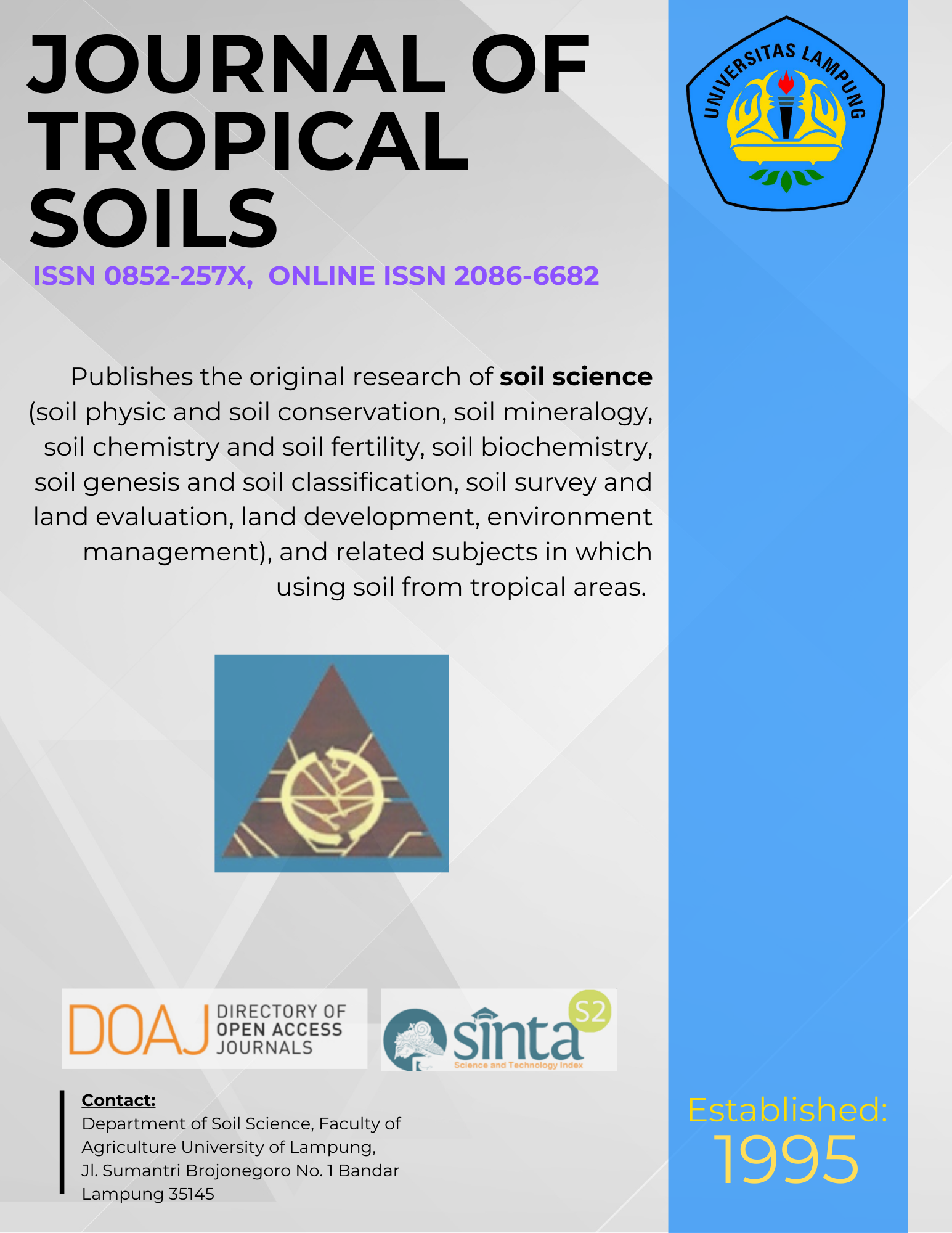Spatial Analysis of Disaster Vulnerability in Wonolelo, Magelang Regency
Main Article Content
Abstract
This research aims to assess the level of disaster vulnerability in the Wonolelo tourist village area using spatial analysis with an overlay method of several factors causing disaster vulnerability. The location of Wonolelo Village on the slopes of Mount Merapi with a rather steep to steep topography makes Wonolelo Village very vulnerable to landslides and the eruption of Mount Merapi. The research results show that Wonolelo Village has a high vulnerability to volcanic disasters (63.71%) and medium vulnerability to landslides (99.12%). The findings of this research can be used to inform disaster mitigation policies and strategies in Wonolelo Village and other vulnerable areas.
Â
Downloads
Article Details
Section
License for Authors
Authors who publish with this journal agree to the following terms:
- Authors retain copyright and grant the journal right of first publication with the work simultaneously licensed under a Creative Commons Attribution License that allows others to share the work with an acknowledgement of the work's authorship and initial publication in this journal.
- Authors are able to enter into separate, additional contractual arrangements for the non-exclusive distribution of the journal's published version of the work (e.g., post it to an institutional repository or publish it in a book), with an acknowledgement of its initial publication in this journal.
- Authors are permitted and encouraged to post their work online (e.g., in institutional repositories or on their website) prior to and during the submission process, as it can lead to productive exchanges, as well as earlier and greater citation of published work (See The Effect of Open Access).
License for Regular Users
Other regular users who want to cite, distribute, remix, tweak, and build upon author’s works, even for commercial purposes, should acknowledge the work’s authorship and initial publication in this journal, licensed under a Creative Commons Attribution License.
How to Cite
References
Ali, S. et al. (2019) ‘Landslide susceptibility mapping by using a geographic information system (GIS) along the China--Pakistan Economic Corridor (Karakoram Highway), Pakistan’, Natural Hazards and Earth System Sciences, 19(5), pp. 999–1022. Available at: https://doi.org/10.5194/nhess-19-999-2019.
Alsubal, S. et al. (2019) ‘A review on mechanism of rainwater in triggering landslide’, IOP Conference Series: Materials Science and Engineering, 513(1). Available at: https://doi.org/10.1088/1757-899X/513/1/012009.
Ha, K.M. (2023) ‘Improving disaster management in international tourism’, Management Review Quarterly [Preprint], (November 2022). Available at: https://doi.org/10.1007/s11301-023-00338-4.
Kelman, I. and Mather, T.A. (2008) ‘Living with volcanoes: The sustainable livelihoods approach for volcano-related opportunities’, Journal of Volcanology and Geothermal Research, 172(3), pp. 189–198. Available at: https://doi.org/https://doi.org/10.1016/j.jvolgeores.2007.12.007.
Kementerian Pertanian (1980) ‘Surat Keputusan Menteri Pertanian Nomor:837/Kpts/Um/11/1980 Tentang Kriteria dan Tata Cara Penetapan Hutan Lindung’, SK Menteri Pertanian No 683/Kpts/Um/8/1981, 837, pp. 1–15.
Malawani, M.N. et al. (2021) ‘Review of local and global impacts of volcanic eruptions and disaster management practices: The Indonesian example’, Geosciences (Switzerland), 11(3), pp. 1–18. Available at: https://doi.org/10.3390/geosciences11030109.
Nakileza, B.R. and Nedala, S. (2020) ‘Topographic influence on landslides characteristics and implication for risk management in upper Manafwa catchment, Mt Elgon Uganda’, Geoenvironmental Disasters, 7(1). Available at: https://doi.org/10.1186/s40677-020-00160-0.
Neef, A. (2021) ‘The Contentious Role of Tourism in Disaster Response and Recovery in Vanuatu’, Frontiers in Earth Science, 9(December), pp. 1–15. Available at: https://doi.org/10.3389/feart.2021.771345.
Noviyanto, A., Sartohadi, J. and Purwanto, B.H. (2020) ‘The distribution of soil morphological characteristics for landslide-impacted Sumbing Volcano, Central Java - Indonesia’, Geoenvironmental Disasters, 7(1). Available at: https://doi.org/10.1186/s40677-020-00158-8.
Rosselló, J., Becken, S. and Santana-Gallego, M. (2020) ‘The effects of natural disasters on international tourism: A global analysis’, Tourism Management, 79, p. 104080. Available at: https://doi.org/https://doi.org/10.1016/j.tourman.2020.104080.
Sani, A.H.M., Muryani, C. and Rindarjono, M.G. (2018) ‘The Analysis of Landslide Vulnerability Map and the Level of School Preparedness in Encountering Landslide in Gumelar Sub-District, Banyumas Regency’, IOP Conference Series: Earth and Environmental Science, 145(1). Available at: https://doi.org/10.1088/1755-1315/145/1/012083.
Schlögl, M. et al. (2019) ‘On the nexus between landslide susceptibility and transport infrastructure -- an agent-based approach’, Natural Hazards and Earth System Sciences, 19(1), pp. 201–219. Available at: https://doi.org/10.5194/nhess-19-201-2019.
Smith, H.G. et al. (2023) ‘The influence of spatial patterns in rainfall on shallow landslides’, Geomorphology, 437, p. 108795. Available at: https://doi.org/https://doi.org/10.1016/j.geomorph.2023.108795.
Widodo, E. and Hastuti, H. (2019) ‘Disaster and Tourism: How Tourism Responds to Disasters in Magelang District’, IOP Conference Series: Earth and Environmental Science, 271(1). Available at: https://doi.org/10.1088/1755-1315/271/1/012009.

